Part 2 in our Plan Your Garden Series
- Part 1 - Plan Your Tea Garden
- Part 2 - Plan Your Curry Garden (this article)
- Part 3 - Plan Your Spice Garden
- Part 4 - Plan Your Herbal Body Care Garden
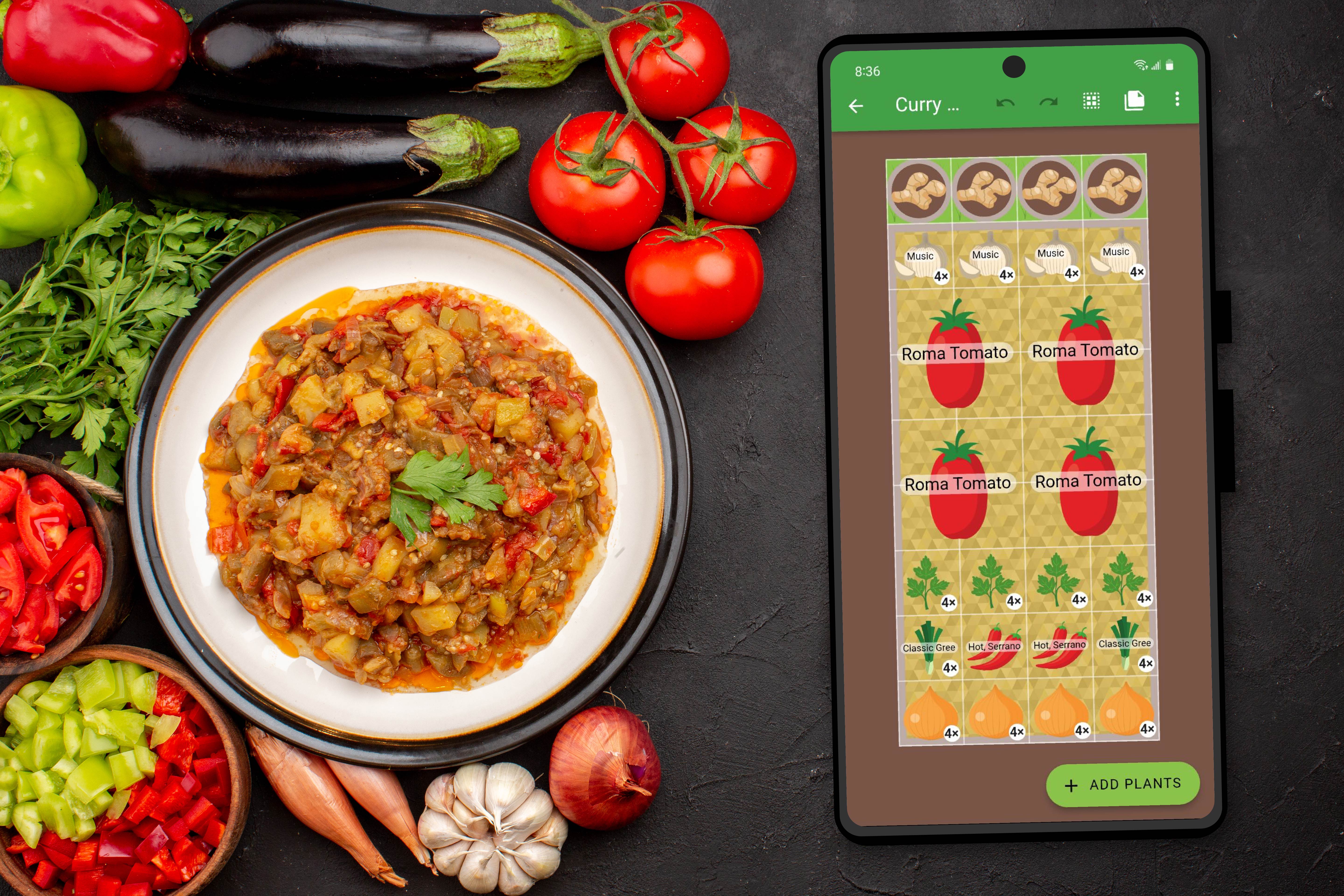
Part 2 in our Plan Your Garden Series
While there are many factors to consider when planning a garden, it’s important to plan based on the types of dishes you and your family enjoy preparing. If you and your family enjoy cooking food with a global flair, you might want to consider planning a ‘curry garden’.
‘Curry’ is actually a loose, catch-all term that doesn’t properly refer to any specific dish. In its originating culture, each dish would have its own unique name. That being said, many dishes that could be loosely grouped as ‘curry-style’ dishes can be created using many of the same core plants in the garden. Let’s explore some potential ways to plan a culinary curry garden in Planter!
Our sample curry garden base plan starts with a standard 4’ x 8’ garden in Planter. We’ve filled the garden with uber-versatile plants that form the backbone of many great curry dishes:
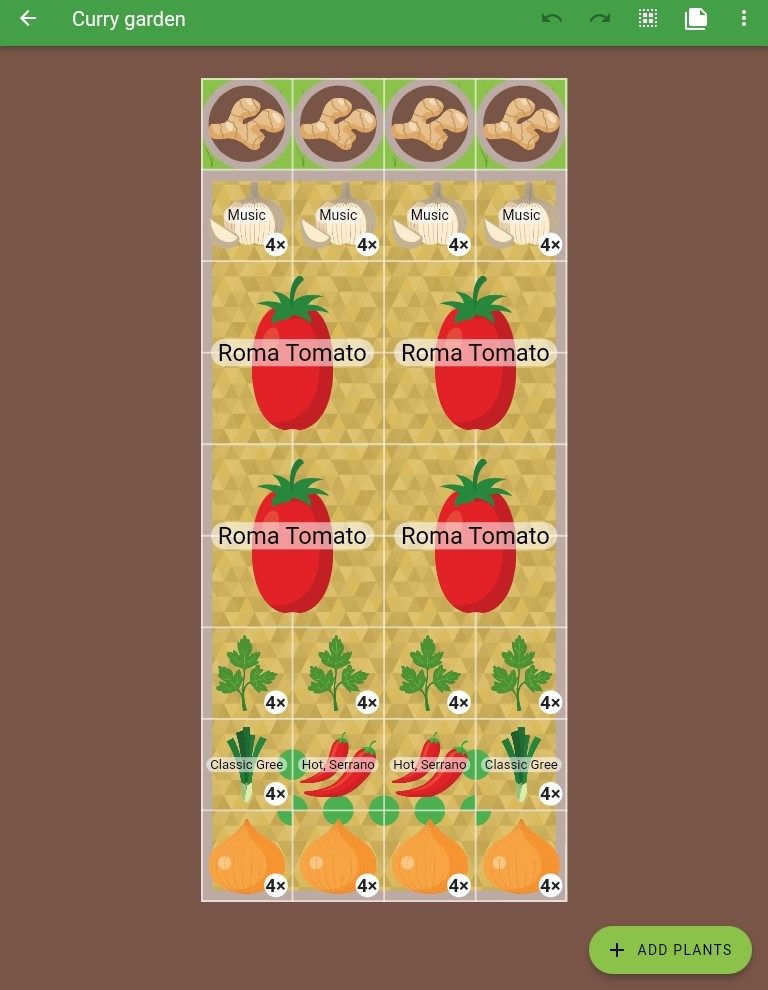
Garlic and cooking onions were placed on the outside because they are slow growers and need to be harvested by pulling or forking them out of the soil. Two hot pepper plants might not seem like a lot, but they’ll likely be prolific enough to provide your family with ample chili harvests (of course if you’re major spice lovers feel free to add more!) While cilantro is associated with cuisines from some of the hotter parts of the world, it actually can’t take the heat all that well and has a tendency to bolt. Because of this, you might want to plan to plant your cilantro in successions.
Roma tomatoes were chosen because they are a nice meaty tomato that work well for cooking. Ginger is kept in containers because a) it grows slowly and needs to be started indoors well in advance if you live in a cooler climate and b) the containers can be moved and positioned around the garden so the plants receive dappled sun- ginger loves the heat but not direct, scorching sunlight.
When choosing locations for the plants in your own plan, be sure to position them so they’ll be easily accessible for harvesting and where they won’t shade each other out unintentionally. This base plan is just a starting point that you can adapt to your unique garden conditions.
If you happen to have some more space to play with in your garden, consider branching out into some specific cuisines:
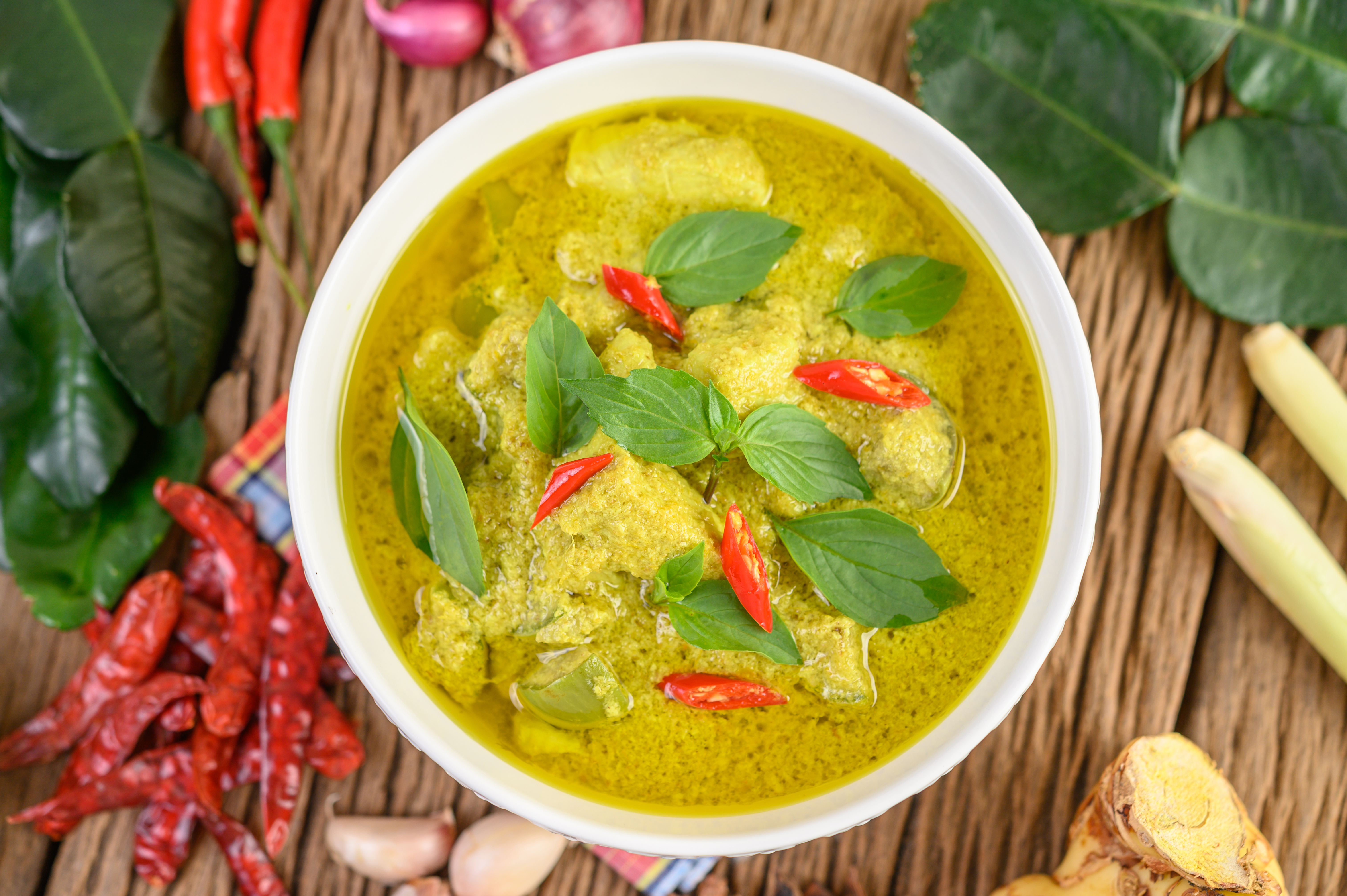
Thai food is vibrant and features an array of different veggies. To prepare some tasty Thai dishes, the following plants were added to the base plan:
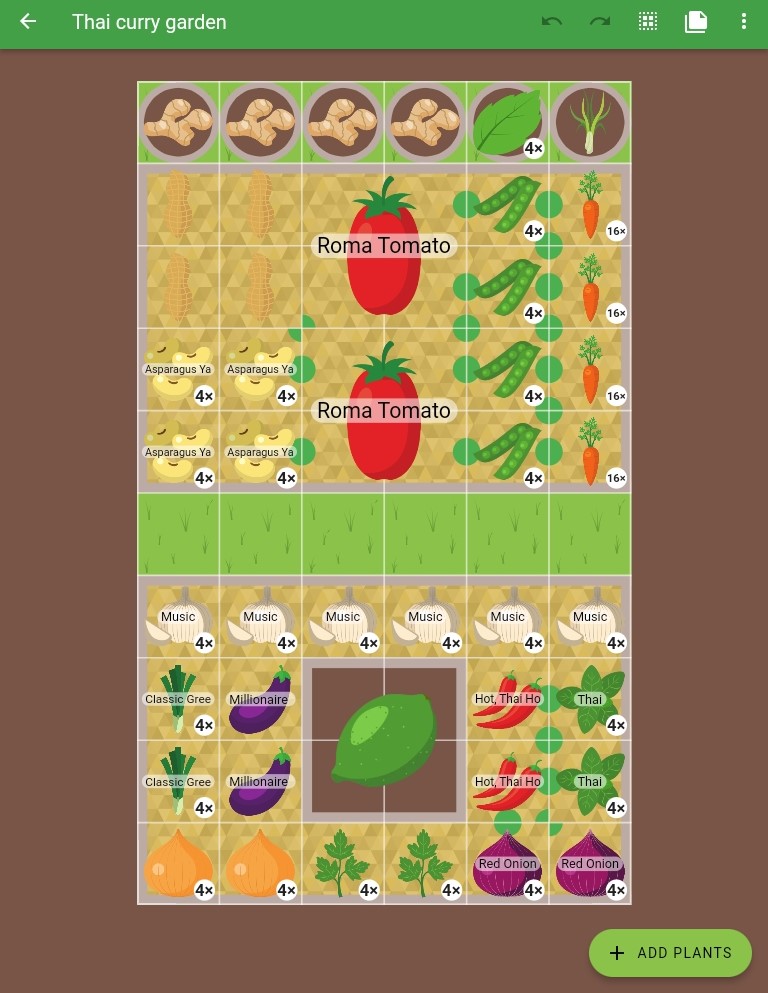
The Thai curry garden plan incorporates most of the plants from the base curry garden plan and adds on from there. The serrano chiles were swapped for Thai chiles, and more garlic and onions were added. Lemongrass is a staple ingredient in many Thai dishes- its included in a container so it can be started early indoors and easily transitioned outside. Mint was also added in a container to prevent it from spreading and taking over the entire garden! Basil plays more nicely so it can be incorporated right into the garden bed. If possible, try to find Thai varieties of mint and basil for a more authentic flavor.
For something slightly more adventurous peanuts and a dwarf lime were added to the plan- these ingredients are often incorporated in Thai dishes or used as accompaniments. Peanuts can grow well even in somewhat northern climates as long as you select an appropriate variety and ensure they are planted with enough time to mature. Limes on the other hand are frost sensitive, but dwarf varieties can be grown as container plants that can be brought inside over winter. If overwintering a lime tree seems like too much work, forgo it and plant something else instead- just be sure not to fill the middle of the garden space with plants that will be hard to reach.
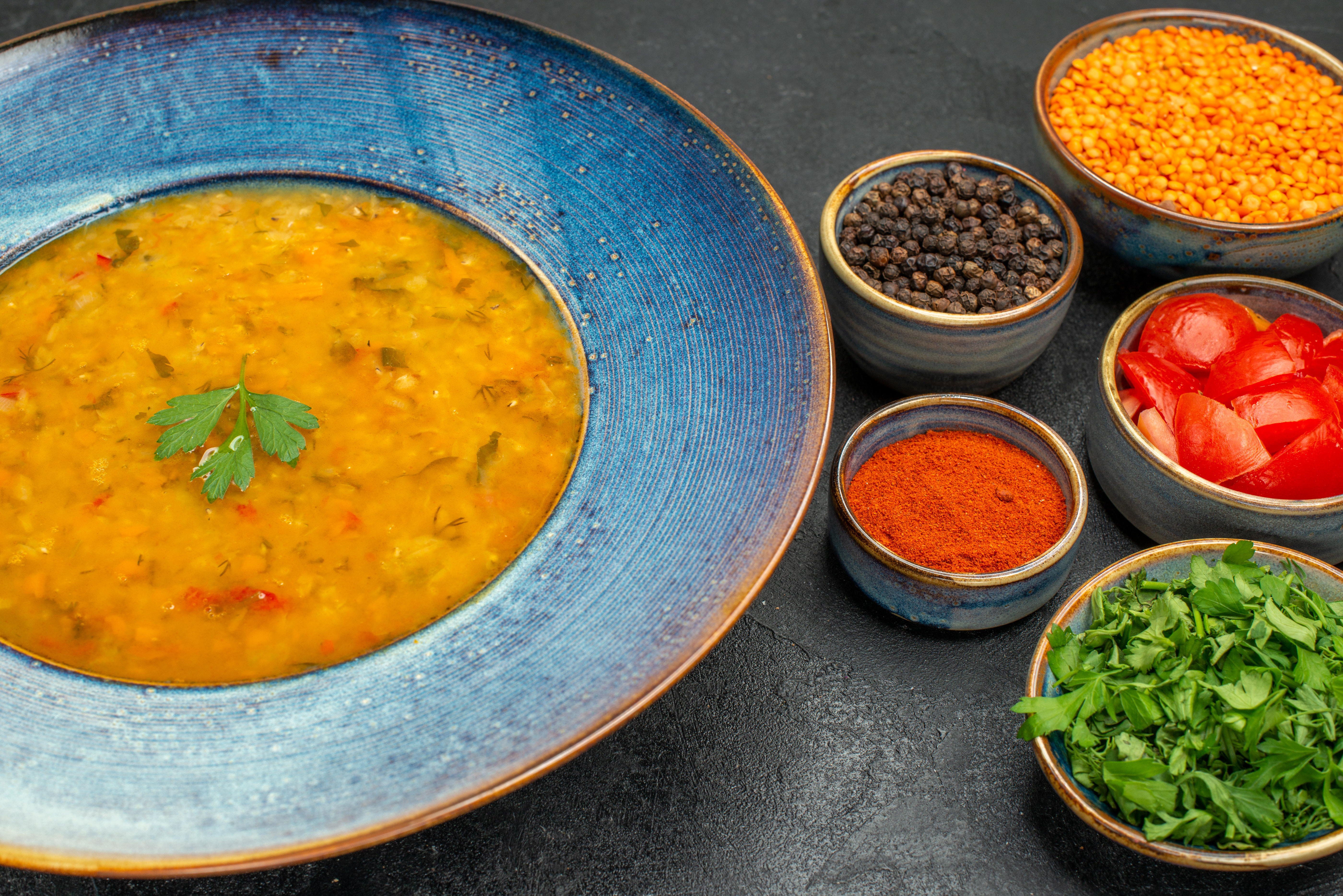
The Indian curry garden plan also works off the same base curry garden plan, but includes some unique ingredients favored in Indian cooking:
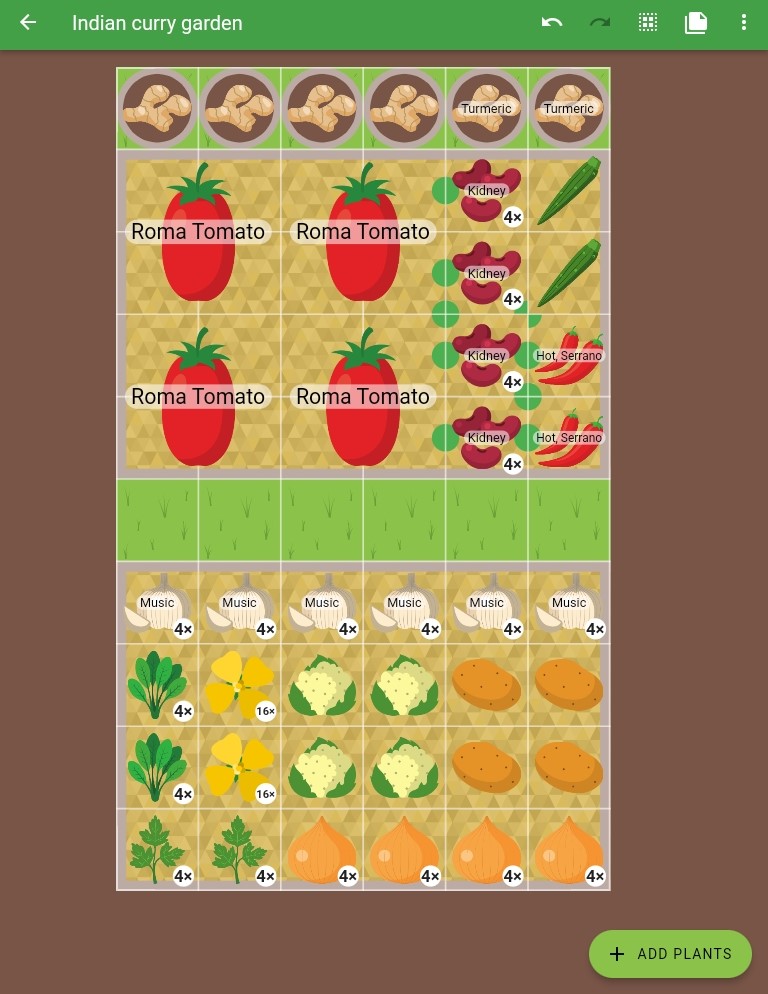
Turmeric is a plant that spreads and grows by rhizomes, similar to ginger. Since turmeric isn’t available in Planter (yet!) one workaround is to create a custom variety of ginger and name it turmeric (turmeric isn’t technically a ginger variety but this is just a quick fix). Like ginger, turmeric is grown in pots so it can be started well in advance and moved around in the garden to capture the perfect balance of sun and shade.
Cauliflower and potatoes are included in the plan as core ingredients in the popular and delicious dish ‘aloo gobi’. Okra is added as the key component of ‘bhindi masala’, and the kidney beans can be used to prepare delicious ‘rajma’. With drying beans you’ll want to have several plants to get a yield that is substantial enough to make bean-based dishes. Rounding out the list we have spinach and mustard- spinach can be used to make a mouth-watering ‘saag paneer’ and along with mustard greens (and other mixed greens) can be used to create delicious ‘saag’ curries. And if your mustard bolts and goes to seed no worries- mustard seed is also a key spice in many Indian dishes!
We hope these curry garden plans have provided some inspiration to plan a fun and practical cuisine-themed garden! Having all the veggies at hand to create a whole range of dishes will help you make the best use of your garden produce in the kitchen. Planter makes it easy and fun to explore garden design possibilities to compliment your culinary adventures!